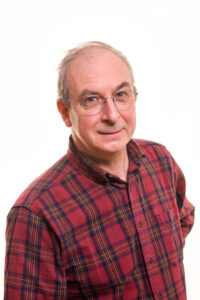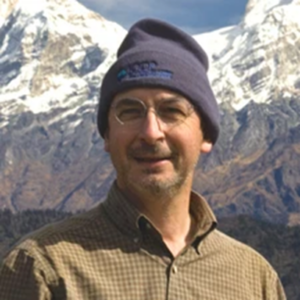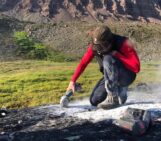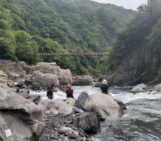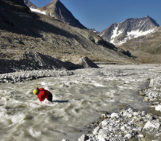
Recently, EGU announced the 2024 medals and awards to be presented at the General Assembly in April, and the winner of the Geomorphology Division Ralph Alger Bagnold Medal Award is Christian France-Lanord, at the Centre de Recherches Pétrographiques et Géochimiques (CRPG), University of Lorraine-CNRS, France. Christian has made many contributions to the field of geomorphology, primarily in his research exploring sediment geochemistry to understand the influences and interplay of climate and tectonic processes on erosion. Our blog editors questioned Christian to learn more about his background and success in geomorphology.
How would you explain or describe your research in brief?
My research aims to tackle the interactions between climate and tectonics, mostly focused on the Himalayan region. This includes direct responses of erosion to climatic and tectonic settings as well as the long-term impact of mountain erosion on the carbon cycle. The long-term record of erosion is accessible in syntectonic sedimentary records but it also requires improved degree of calibration and observation of modern analogs. For this reason, my research is based on a back and forth between studying current processes of erosion and transport from mountain to sea, and interpretation of sedimentary records of the past. This combines various approaches, from acquisition of samples and data in the field to deep-sea drilling, and is supported by using various geochemical tracers to decipher sources, weathering, erosion rates, and environmental conditions.
What has shaped your research interests over the years?
It’s a combination of encounters and opportunities. I started to study Himalayan metamorphic and magmatic processes using geochemistry, for the most part stable isotope geochemistry. After my PhD, I extended my geochemical approach to study the water transfer in an oceanic subduction context. This gave me the opportunity to experience deep-sea drilling, which is a unique multidisciplinary experience in Earth Sciences. At the end of the eighties, the growing domain of Earth’s surface processes and climate-tectonic interactions attracted me. ODP has just drilled the Bengal Fan (Leg116) and my knowledge of the Himalayan geology was useful to trace these sediments on a source-to-sink view and to address how mountain erosion interacts with the carbon cycle. Specifically, could the erosion of a collision belt like the Himalaya imbalance the carbon cycle and trigger the Tertiary global cooling? This prompted the need to better understand and quantify the erosion processes from mountain to sedimentary basins, and how sediments do record these processes.
Fruitful interactions with colleagues were decisive in guiding my research pathway. Amongst them, Louis Derry on the carbon cycle, Jérôme Gaillardet on rivers, Hermann Kudrass and Volkhard Spiess on the Bengal Fan. PhD students and Postdocs were also the constant source of renewed inspiration and brought new angles of reflection.
What keeps you excited or interested in the field of geomorphology?
The diversity of physical, chemical, and environmental processes involved and the challenge of using our relatively instantaneous set of present-day observations to decipher Earth’s surface process in the geological past. I also find it stimulating to try to integrate mountain erosion as a complete machinery from tectonically driven mountain topography to climatically controlled valleys, rivers, floodplain, and finally reaching the delta complex and deep-sea submarine fan.
What was a memorable experience or moment in your geomorphology career?
When completing difficult monsoon season river sediment sampling and hydrodynamic measurements, and using a combination of geochemical tracers of sediment, allowed us to quantify physical and chemical erosion on the Ganga and Brahmaputra rivers with docs and post-docs Albert and Valier Galy, Maarten Lupker, Guillaume Morin, Sunil Singh.
What do you enjoy most about your work?
Field work with students and colleagues. This indeed includes a large variety of conditions from relatively simple and light expeditions on rivers, to the complex setting of deep-sea drilling with IODP. The direct observation of the field is the bedrock of our research.
What advice do you have to share with early career geomorphologists?
Keep being curious by capturing new and original observations/samples, which are missing pieces in our understanding and modeling.
Responses were lightly edited for clarity and length.

